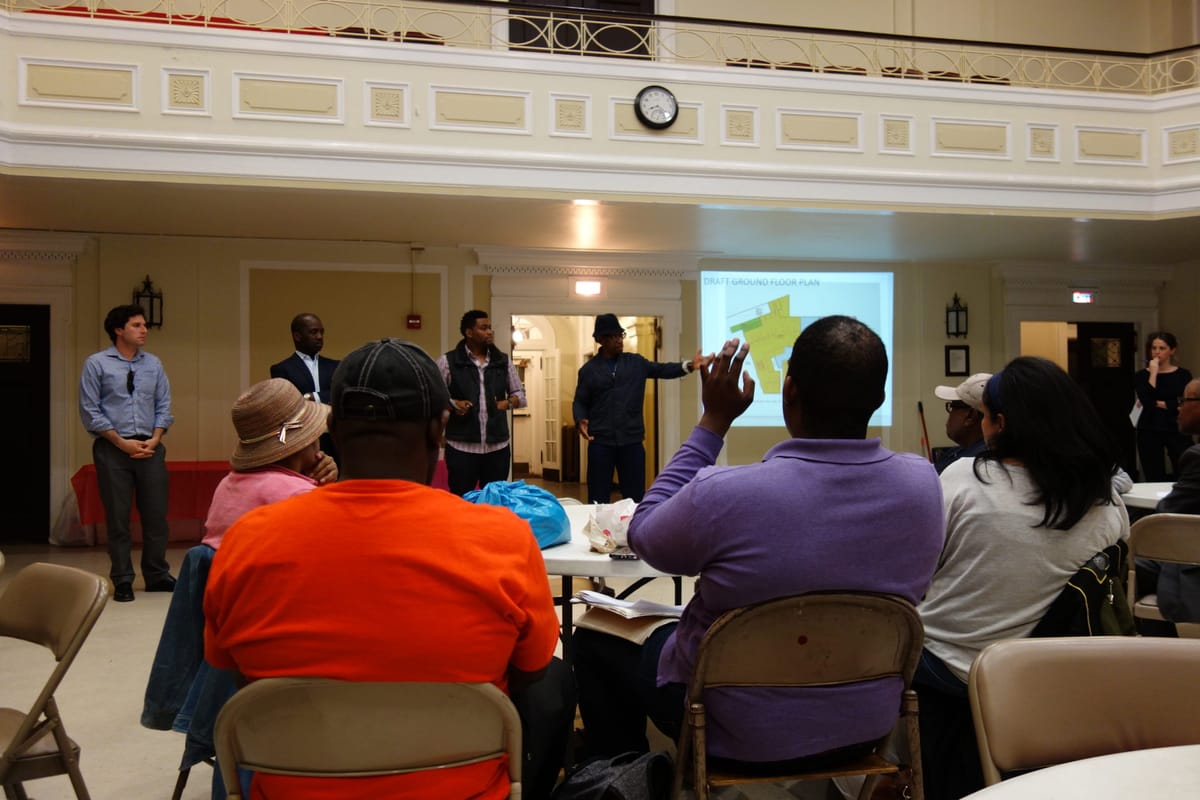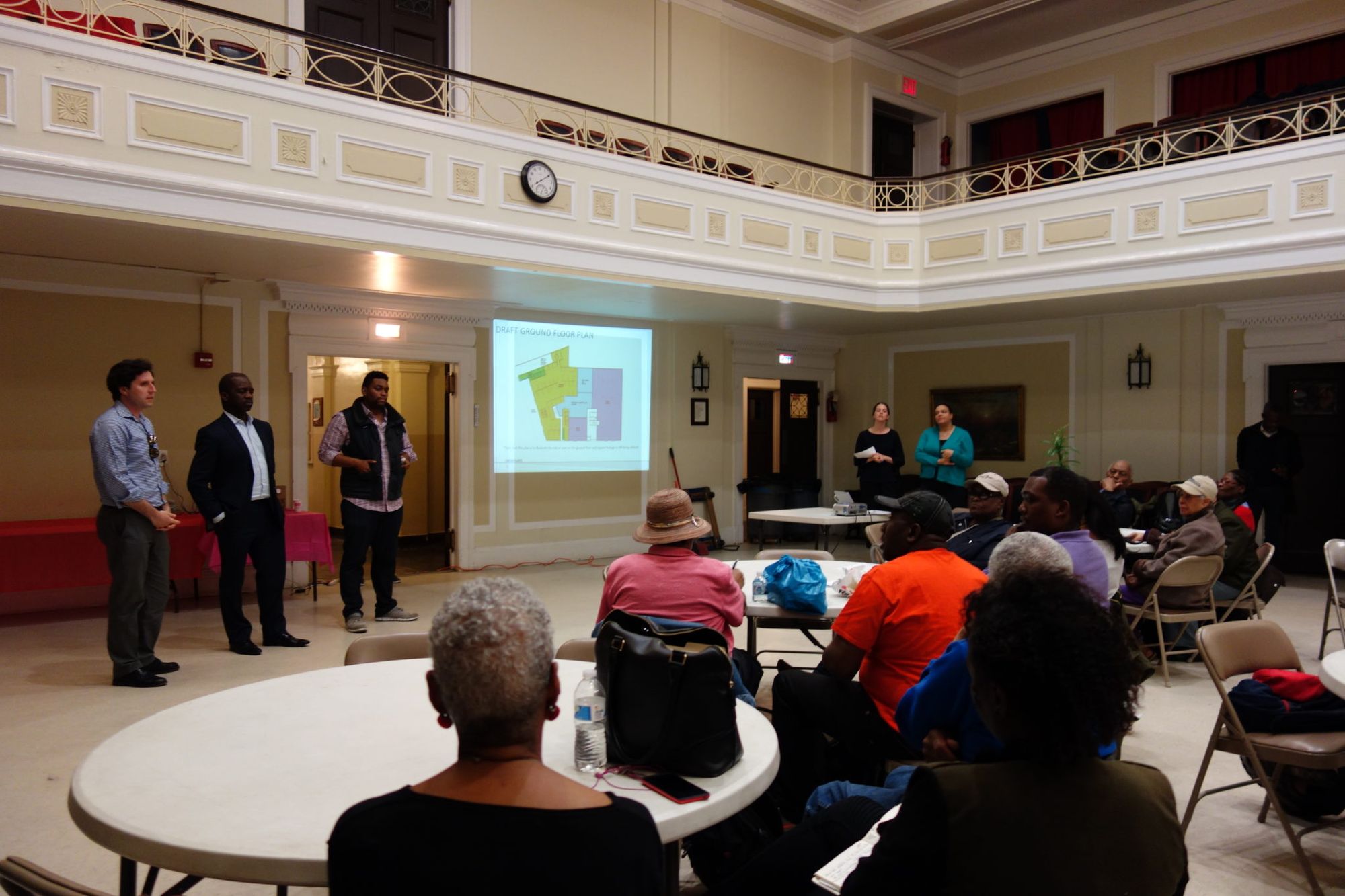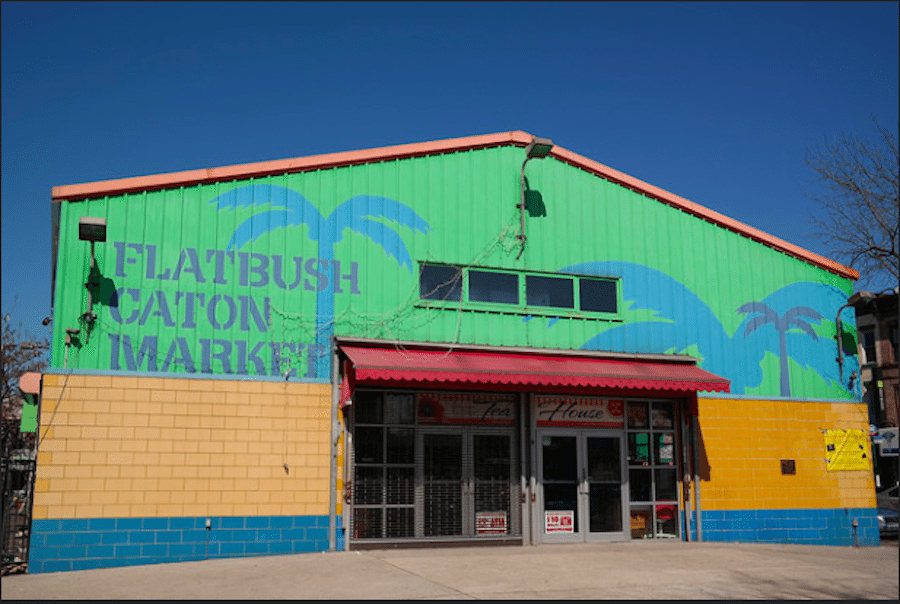“We’re The Good Guys” Developers On Flatbush’s Game-Changing New Building


Last night, developers, designers, and planners from Flatbush’s upcoming 14-story tower assured longtime residents that their mixed-use building aims to bolster Flatbush’s Caribbean community — not tear it down.
The East 21st Street Block Association brought the developers of Flatbush’s Caton Flats, a combined Caribbean vendor market and affordable housing tower at the corner of Flatbush and Caton Avenues, together with neighbors and community leaders in a town-hall style forum.
The 14-story building, from Urbane Development, BRP Development Corporation, and Caribbean Chamber of Commerce and Industry, will add 251 affordable housing units to the neighborhood, an upgraded venue for Caton Market vendors, an office for the Caribbean American Chamber of Commerce and Industry (CACCI) and a business incubator with a commercial kitchen.
The development plan, which has been moving through the stages of ULURP, was approved by unanimously by Community Board 14 in December 2016 and passed City Council last week.
Construction is expected to start in January 2018 and be completed by 2020.
But in the meantime, many neighbors expressed concerns about the heightened traffic and noise pollution the construction would bring to an already crowded Flatbush corner; as well as the future for the 41 vendors at the Caton Market.
“I’ve lived in Flatbush for 27 years,” said one resident. “On a decent day traffic is a nightmare on that corner. This is going to be a massive project, and very disruptive for as long as construction lasts. I’m very concerned about that.”
Last night, civic leaders were joined by 70th Precinct Deputy Inspector James Palumbo, Community Board 14 District Manager Shawn Campbell, City Council Member Mathieu Eugene, and others to hear feedback.
“This community is being overwhelmed right now. We’re the ones who are going to be inconvenienced,” said Walter Omowale, president of the 15-year old block association. “How will this development benefit us?”

Plans for the market and 251 affordable housing apartments
“We’re trying to understand Flatbush,” said James Johnson-Piett of Urbane Development, who has been meeting with vendors and conducting on-site research, studying shopping patterns and looking for ways to improve the market while staying “true to the strong and proud Caribbean community.”
The new market will include a high-ceiling design, a business incubator, a commercial kitchen space, a lab for businesses that make clothing and beauty products, educational spaces for community use, and a home base for CACCI (whose representatives were absent from last night’s meeting).
“There are food markets and halls popping up all over the city,” said Johnson-Piett. “As a market operator, the Caribbean culture focus gives us a competitive advantage.”
During the 2-year construction phase, the 41 Flatbush Caton Market vendors will be relocated to a clean, indoor, air-conditioned, 9,000-square-foot store on Clarendon and Flatbush Avenues, said developers.
Businesses will get one year of free rent, along with additional marketing and business development services, and if they comply with legal standards, they’ll be invited back to the newly developed market at a frozen rent, they promised. “If you’re a good business, paying your rent, and are in compliance with individual agreements, they’ll move back to the permanent space,” said Johnson-Piett.
Council Member Mathieu Eugene championed these victories. He’s been working closely with developers on assuring vendor’s a temporary storefront and an assured their spot in the new market, making sure construction companies buy local supplies, and offering jobs in the district, he said.
“These are one of the few developers that opened themselves up to meet with the community,” said Omowale.

On top of the market, studios, 1-bedroom, 2-bedroom, and 3-bedroom apartments will tower 14 stories over the street, with a recessed design to curb shadows at ground level.
The mixed-income affordable apartments will be awarded through a lottery, but 50 percent of those units will be reserved for residents within Community Board 14, as per the mandatory inclusionary housing zone regulations, said developers.
The units are divided up between lower and middle-income limits, which are calculated based on HUD’s Annual Median Income (AMI). Of the total 251 units available, 11 percent of the unit’s rents will be set for up to 37 percent and up to 57 percent of AMI, respectively. 30 percent of the rents will be set for 80–90 percent AMI, and 48 percent for 130 percent of AMI.
As a reference, 40 percent of the AMI for a family of four is $36,240, and 60 percent is $54,360, based on 2016’s AMI calculations.
(The total AMI for 2017 is $95,400 for a family of four, according to the NYC Housing Development Corporation. Read more about income eligibility here.)

Community involvement
For East 21st Street neighbors, communication is crucial for a development that will benefit — and not price out — longtime residents.
“People have been disenfranchised and think they have no voice,” Omowale told BKLYNER. “As a community leader, I’m trying to tell people that they do have a voice.”
Omowale brought the developers in to foster conversation with residents, and push for more transparent communication throughout the building process.
“If we hadn’t done our job, you wouldn’t even be building in this community,” said Omowale. “We had a lot of violence and drug dealers on the block, we used to call it gunsmoke. But we worked with the 70th Precinct to turn the tides. Now that we can reinvest in the community, everyone’s coming in.”
Last night’s participants did seem engaged and concerned about the welfare of the 41 vendors, the increased levels of noise and traffic during construction, who would be eligible for the affordable units, and how this development would alter the fabric of the neighborhood.
“I’ve lived here since 1978,” said one woman in the audience, who has seen the vendors get harassed by police when they used to set up their wares on the street before the Caton Market was formed in 2001. “Are you moving them to a decent space, and when you’re finished, can they come back?”
One audience member requested better communication regarding the construction schedule, noting that several developers on the block have been working past legally designated hours.
“We’re the good guys,” said a BRP rep, citing dozens of meetings held with federal, state, and local elected officials and community boards, and community feedback in the process.
“We will be communicating with local officials and the community board every step of the way,” reps promised, noting that to meet the construction deadline crews sometimes have to acquire permits to work on nights and weekends. “Construction is disruptive, but if we work together we can move it quickly.”
Representatives from Urbane Development and BRP assured the audience that they’re working with federal, state, and local representatives, but some longtime Flatbush residents noted that outreach doesn’t always filter down.
“It is not over yet,” assured Eugene, who says he’ll continue working with developers to oversee the process and tell neighbors about building schedules and housing lottery applications once they’re available.
[Corrections: a previous version of this article stated that the completion date would be 2019.]



